Cuando intentamos iniciar sesión en nuestros propios sitios web de WordPress, a veces la página de inicio de sesión se actualiza y redirige constantemente, lo que nos impide acceder al área de administración de WordPress.
Si está experimentando esto, no está solo. El problema de actualización y redirección de la página de inicio de sesión de WordPress es común y frustra a muchos propietarios de sitios WordPress. Dicho esto, hemos probado varios métodos para resolver el problema.
En esta completa guía, le mostraremos cómo solucionar el problema de actualización y redirección de la página de inicio de sesión de WordPress. Sumerjámonos de lleno y volvamos a su escritorio de WordPress para que pueda recuperar el control de su sitio web.
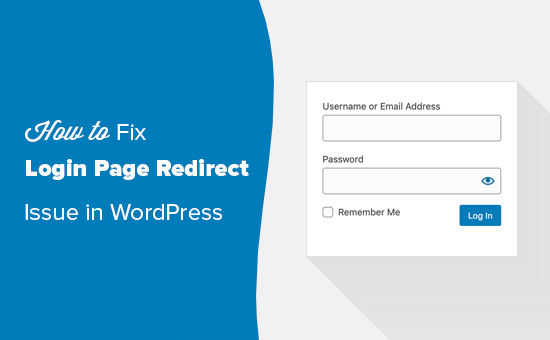
¿Cuál es la causa del problema de actualización y redirección de la página de acceso en WordPress?
El error de actualización y redirección de la página de inicio de sesión de WordPress (también llamado bucle de redirección de inicio de sesión de WordPress) suele estar causado por una configuración incorrecta de la URL de WordPress o por un fallo en la configuración de las cookies de inicio de sesión.
Normalmente, cuando accedes, WordPress valida tu nombre de usuario y contraseña y luego establece una cookie de acceso en tu navegador / explorador. Después, te redirige al escritorio de WordPress.
Si WordPress no establece la cookie de acceso correctamente o la URL de su área de administración de WordPress es incorrecta, será redirigido de nuevo a la pantalla de acceso en lugar de al escritorio de administrador.
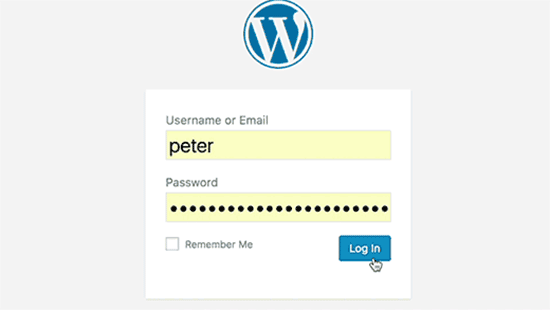
Los problemas de acceso / acceso también pueden ser causados por diferentes errores de WordPress, como el error al establecer la conexión con la base de datos, error interno del servidor, o la pantalla blanca de la muerte.
Con esto en mente, vamos a diagnosticar y corregir el problema de redirección y actualización de la página de acceso de WordPress. Puede utilizar estos enlaces rápidos para saltar a un método específico:
- Method 1: Clear Cookies to Resolve Login Issues
- Method 2: Update WordPress URL Settings
- Method 3: Delete .htaccess File in WordPress
- Method 4: Deactivate Your Plugins
- Method 5: Revert Back to the Default Theme
- Method 6: Reinstall WordPress Core
- Video Tutorial
- What to Do If You Can't Fix WordPress Login Redirect Issue
Nota: Si desea probar los pasos avanzados de este tutorial de WordPress, cree primero una copia de seguridad de su sitio. Consulte nuestra guía sobre cómo crear manualmente una copia de seguridad de la base de datos de WordPress.
Método 1: Vaciar cookies para resolver problemas de acceso / incidencia
WordPress utiliza cookies para la identificación de acceso, por lo que el primer paso para diagnosticar problemas de acceso a WordPress es el más sencillo. Deberá vaciar las cookies y la memoria caché de su navegador / explorador.
En Google Chrome, basta con hacer clic en el menú de ajustes del navegador y seleccionar Más herramientas ” Vaciar datos de navegación.
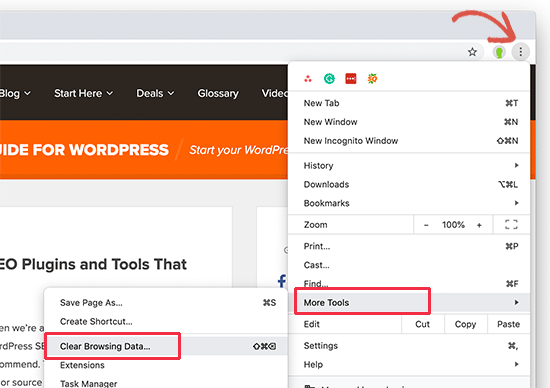
Se abrirá la página de ajustes de Chrome con un mensaje / ventana emergente “Vaciar datos de navegación” en la pantalla.
Desde aquí, debe seleccionar las opciones “Vaciar cookies y otros datos del sitio” e “Imágenes y archivos almacenados en caché”.
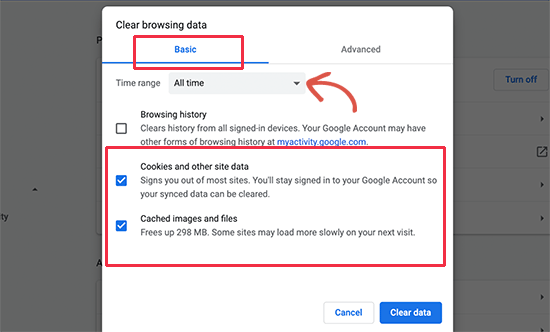
A continuación, haz clic en el botón “Borrar datos” y Google Chrome vaciará la caché del navegador.
Asegúrese también de que su navegador tiene activadas las cookies. Una vez hecho esto, reinicia el navegador e intenta acceder. Esto debería corregir el problema para la mayoría de la gente.
Tenemos una guía completa con capturas de pantalla que muestran cómo vaciar la caché y las cookies en los principales navegadores.
Método 2: Actualizar los ajustes de URL de WordPress
WordPress viene con ajustes para la URL de su sitio web y la URL de su instalación de WordPress.
Si tiene acceso al área de administrador de WordPress, podrá ver esta opción en la página Ajustes ” General.
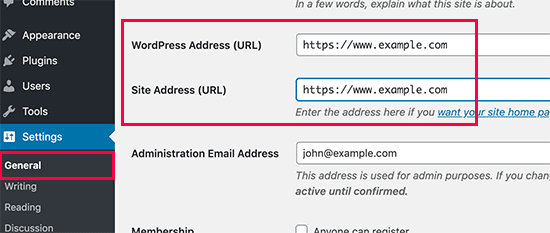
Si estas URLs son incorrectas, WordPress le redirigirá de nuevo a la página de acceso.
Dado que no se ha podido acceder al área de administrador de WordPress, deberá editar el archivo wp-config. php para corregir este problema.
El archivo wp-config.php es un archivo especial de WordPress que contiene los ajustes importantes de WordPress. Puede acceder a él mediante un cliente FTP o a través de la aplicación Administrador de archivos en el escritorio de WordPress de su cuenta de alojamiento.
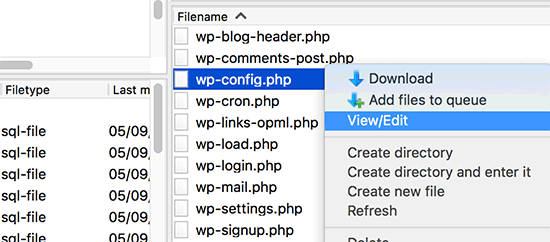
Encontrarás el archivo wp-config.php en la carpeta raíz de tu sitio. Simplemente edite el archivo y pegue las siguientes líneas de código justo antes de la que dice: ‘ ¡Eso es todo, deje de editar! Feliz publicación'.
1 2 | define('WP_HOME','https://www.example.com');define('WP_SITEURL','https://www.example.com'); |
No olvide sustituir “ejemplo.com” por su propio nombre de dominio.
Después, guarda los cambios y vuelve a subir el archivo a tu sitio web.
Ahora puede visitar su sitio web de WordPress e intentar acceder. Esperamos que esto haya corregido el problema. Si no es así, sigue leyendo para diagnosticar otros problemas.
Método 3: Borrar archivo .htaccess en WordPress
A veces, el archivo .htaccess puede corromperse, lo que puede provocar errores internos del servidor o el error de actualización de la página de acceso.
Sólo tienes que acceder a tu sitio web mediante un cliente FTP o a través de la aplicación de gestión de archivos del panel de control de tu proveedor de alojamiento.
Una vez conectado, localice el archivo .htaccess en el directorio raíz de su sitio web y descárguelo a su ordenador como copia de seguridad.
Si no puede encontrar su archivo .htaccess, esta guía sobre por qué puede faltar su archivo .htaccess puede ayudarle.
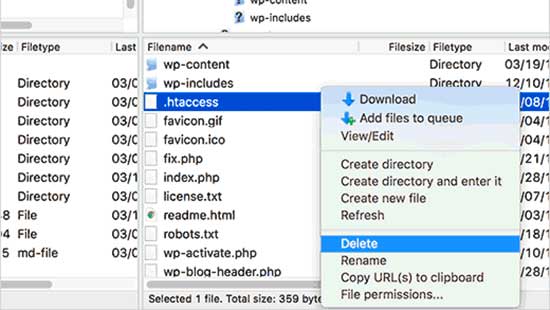
A continuación, borre el archivo .htaccess de su sitio web.
A continuación, abra el directorio wp-admin, y si hay un archivo .htaccess allí, entonces seguir adelante y borrarlo también.
Ahora puede intentar acceder a su sitio web de WordPress. Si lo consigue, significa que su archivo .htaccess le impedía acceder a WordPress.
Una vez que haya accedido, simplemente vaya a la página Ajustes ” Enlaces permanentes en el panel de administrador de WordPress y haga clic en el botón “Guardar” sin realizar ningún cambio. Esto generará un nuevo archivo .htaccess para tu sitio web.
Método 4: Desactive sus plugins
A veces, los plugins de WordPress pueden causar este problema, especialmente si hay un conflicto entre dos plugins.
Para desactivar fácilmente todos sus plugins de WordPress, conéctese a su sitio web mediante un cliente FTP o a través de la aplicación Administrador de archivos del panel de control de su cuenta de alojamiento web.
Una vez conectado, vaya al directorio /wp-content/. Dentro de él, verá una carpeta llamada ‘plugins’. Aquí es donde WordPress instala todos tus plugins.
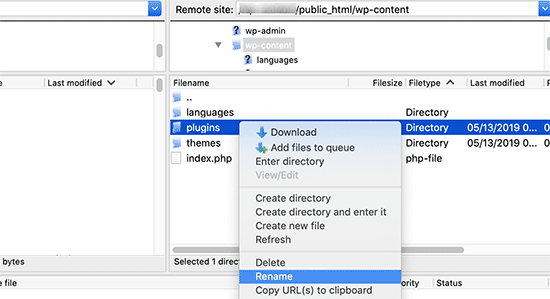
Simplemente renombra la carpeta de plugins a ‘plugins_backup’. Esto desactivará todos los plugins de WordPress instalados en su sitio web.
También tenemos un tutorial detallado sobre cómo desactivar todos los plugins de WordPress cuando el administrador de WordPress es inaccesible.
Una vez que haya desactivado todos los plugins, intente acceder a su sitio de WordPress. Si lo consigues, significa que uno de tus plugins era el causante del problema / conflicto / incidencia.
Método 5: Volver al tema predeterminado
Los temas de WordPress también pueden causar conflictos tras la actualización a una versión más reciente de WordPress o del propio tema. Para averiguar si el problema lo está causando tu tema, tendrás que desactivarlo.
El proceso es similar a la desactivación de plugins. Conéctese a su sitio web utilizando un cliente FTP. Luego, debes ir al directorio /wp-content/themes/ y renombrar el directorio de tu tema actual a ‘themes_backup’.
Una vez hecho esto, intente acceder de nuevo. Si lo consigue, significa que el tema era el causante del problema / conflicto / incidencia.
Ahora puedes reinstalar una copia nueva de tu tema para ver si se resuelve el problema / conflicto / incidencia. Si el problema reaparece, tendrás que ponerte en contacto con el soporte de tu tema o cambiar a otro tema de WordPress.
Método 6: Reinstalar el núcleo de WordPress
En raras ocasiones, el problema de actualización persistente de la página de acceso / acceso puede deberse a que los archivos del núcleo de WordPress estén dañados.
Estos archivos del núcleo son la base de su sitio web WordPress y gestionan funcionalidades esenciales. Si estos archivos se dañan o se sobrescriben con un código incorrecto, pueden producirse varios errores, incluidos problemas de acceso / acceso.
En primer lugar, dirígete a WordPress.org y descarga la última versión del software. Una vez descargada, descomprime el archivo en tu ordenador. Se creará una carpeta llamada “wordpress” que contendrá todos los archivos necesarios para la reinstalación.
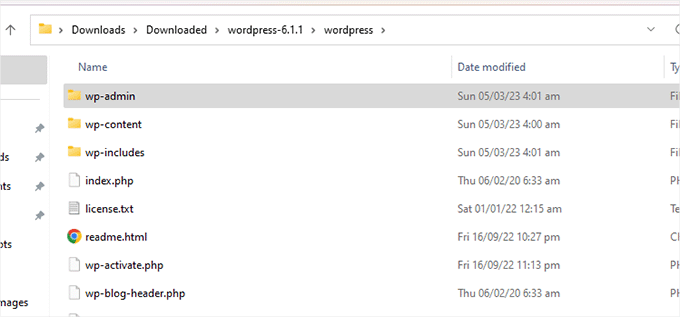
A continuación, tendrá que conectarse a su sitio web mediante un cliente FTP o el gestor de archivos que le proporcione su empresa de alojamiento.
Una vez conectado, vaya a la carpeta raíz de su sitio web. Este es el directorio principal que contiene carpetas como wp-admin, wp-content y wp-includes.
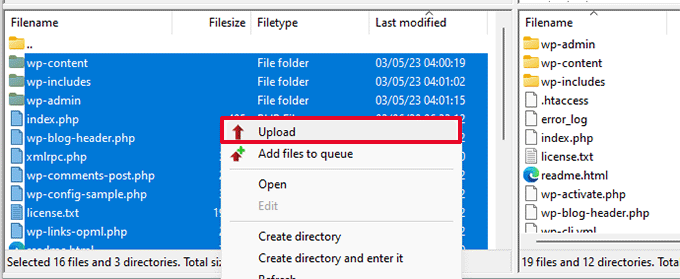
En esta fase, coge todos los archivos de la carpeta “wordpress” de tu ordenador y súbelos al directorio raíz de tu sitio web.
Su cliente FTP le pedirá que confirme la sobrescritura de cualquier archivo de núcleo existente.
Dado que está borrando archivos dañados del núcleo de WordPress y sustituyéndolos por otros nuevos, elija “Sobrescribir” y seleccione la opción “Usar siempre esta acción” para evitar tener que confirmar cada archivo individualmente.
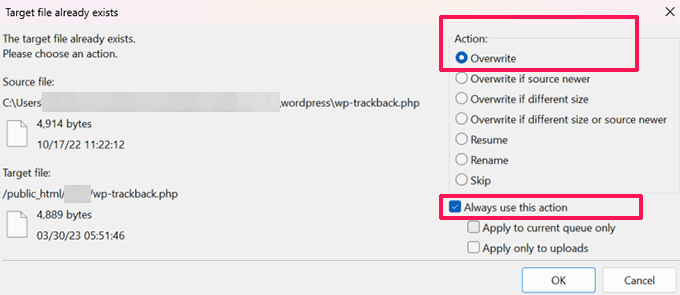
Por último, haga clic en “Aceptar” para iniciar el proceso de subida. Su cliente FTP sustituirá los archivos del núcleo de WordPress de su sitio web por los nuevos archivos de su ordenador.
Una vez completada la subida, visita tu sitio web para ver si se ha corregido el error. Si el problema / conflicto / acceso se debe a un archivo de núcleo dañado o a malware, el mensaje de error debería desaparecer y debería poder acceder correctamente.
Tutorial en vídeo
Si necesita instrucciones visuales, vea el siguiente vídeo.
Qué hacer si no puede solucionar el problema de redirección de inicio de sesión de WordPress
Si lo has intentado todo, desde borrar las cookies del navegador hasta desactivar temas y plugins, pero el problema persiste, puedes solicitar ayuda en la comunidad de WordPress.
Los usuarios de grupos como el WPBeginner Engage Facebook group pueden haber experimentado el mismo problema que usted y pueden proporcionar consejos sobre qué hacer para resolver los problemas de la página de inicio de sesión.
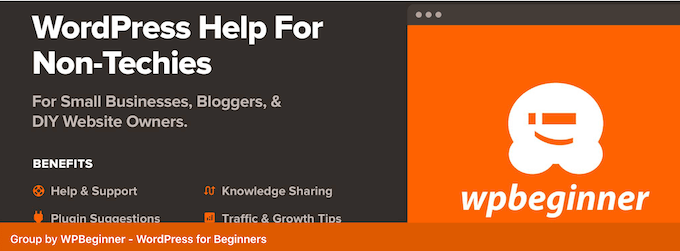
Aparte de eso, puede recurrir a soluciones de soporte de WordPress como WPBeginner Pro Services. Ofrecemos soporte premium de emergencia para WordPress, donde los expertos pueden identificar lo que está sucediendo con su sitio web y abordar la causa raíz del problema.
También puede contratar nuestros servicios de mantenimiento de WordPress para evitar que problemas como el malware, el elevado tiempo de inactividad y la desactualización de WordPress afecten a su sitio web en primer lugar.
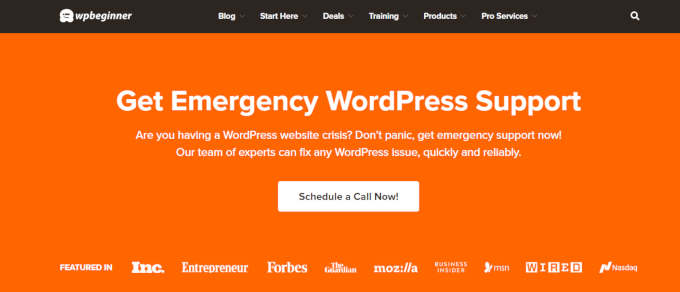
No dude en concertar una cita con nuestro equipo hoy mismo para ver qué podemos hacer para arreglar su sitio web.
Más información Soluciones para diagnosticar problemas de WordPress
¿Está experimentando otros errores comunes de WordPress y necesita encontrar una manera de corregirlos? Aquí tienes otros artículos que puedes marcar / comprobar:
- Cómo corregir el problema de demasiadas redirecciones en WordPress
- Cómo corregir fácilmente el error This Site Can’t Be Reached en WordPress
- Cómo corregir el mensaje “El sitio está experimentando dificultades técnicas” en WordPress
- Cómo corregir entradas de WordPress que devuelven el error 404 (paso a paso)
- Cómo corregir el error de contenido mixto en WordPress (paso a paso)
- Cómo corregir el error JSON no válido en WordPress (Guía para principiantes)
- Cómo encontrar y acceder a los registros de errores de WordPress (paso a paso)
- Cómo corregir el problema de que WordPress no envía correos electrónicos
- Cómo corregir el bloqueo de WordPress en modo de mantenimiento (de forma sencilla)
Esperamos que este artículo te haya ayudado a resolver el problema de actualización y redirección de la página de inicio de sesión de WordPress. También puedes consultar nuestra guía completa de solución de problemas de WordPress o echar un vistazo a nuestra selección de los mejores plugins y herramientas de WordPress para hacer crecer tu sitio.
If you liked this article, then please subscribe to our YouTube Channel for WordPress video tutorials. You can also find us on Twitter and Facebook.




Eric
I had to rename /wp-content/object-cache.php. Hope that helps for anyone who the other steps don’t work for.
Alisha
When i type myurl.com/wp-admin the page shows blank. I can’t see any login panel either nor does my website opens… what is the cause?
WPBeginner Support
Please see How to fix the WordPress white screen of death.
Admin
Akeem
editing the wp-config worked like a charm. thank you so much!
Jeff
If you are having this issue, and nothing suggested here will work – log into the Cpanel and go into PHP My Admin, run a repair on your database table.
Micah
Adding the code to the wp-config.php solved this for me.
define(‘WP_HOME’,’http://example.com’);
define(‘WP_SITEURL’,’http://example.com’);
Thanks for the article! It took me 3 hours sifting through other posts before I found your post and the resolution that I needed!
Micah
MuhdNurHidayat
Thank you very much! You saved my day!!
Gordon
This problem can also occur if your server hosting WordPress has run out of disk space. Freeing up disk space can solve it.
Victor
You saved my day. I lost hours trying to find what the hell was wrong… thanks dude
Angelo
Deleting the .htaccess worked for me. Thank you
Friday0
Sir please help me look at what am getting it started this night.
Fatal error: Call to undefined function
wp_is_mobile() in /home/u318928021/
public_html/wp-login.php on line 39
I don’t know what to do
WPBeginner Support
Seems like a plugin or your WordPress theme is causing this error. Deactivate all your WordPress plugins and check if this resolves your issue. If it does then you need to reactivate plugins one by one. This will help you find the plugin causing the error. If deactivating all plugins does not resolve the issue, then switch to a default WordPress theme like Twenty Fifteen. If switching theme resolves the issue, then the problem is your with your WordPress theme.
Admin
Luis
Thanks, it was a plugin conflict. I just deleted some useless crap via ftp and now it’s all sorted.
Thomas Le Coz
You guys saved my ass. I was stuck outside a client site after messing with a SSL certificate and some stuff on managed account.
Never encountered this issue before, got saved by your guide.
Thanks
Eva Duli
Nothing of these work for me. I want to work the site localhost but when I am trying to login in the admin it redirects to the old admin login. Do you have any idea?
Marco Panichi
My problem was that I hadn’t renew the database and the provider denied my user to insert/update the database.
The error I received was: “INSERT command denied to user ‘Sqlxxxxxx’@’xx.xxx.xxx.xxx’ for…”
So the solution in my case was:
1) activate the debug into wp-config.php > define(‘WP_DEBUG’, true); in order to discover the problem
2) renew the database
Hope this help!
JohnnZenith
I have a wordpress.com blog and all these instructions either are not relevant or I do not understand them, so I guess i’m going to leave it.
WPBeginner Support
These instructions are for self hosted WordPress.org sites. Please see our guide on the difference between WordPress.com and WordPress.org
Admin
chris
I cant find my .htaccess file? I can find it in my rootfirectory but not on my subdomain (where I have a whole new wordpress site). What do I do? It is my first time ever to log in to my subdomain wordpress.
Kenny
The dreaded Internal Server Error and web host support quickly identified a corrupted .htaccess. Spent next 3 hours trying to find how to use my ImportBuddy when I didn’t have WP Admin access. Finally thought to check WPBeginner, found the .htaccess issue above and 30 seconds later had fixed the issue. Next time I come here first!
Thanks guys and gals.
Drew
Changing the wp-config.php file did it for me! This is the second time I’ve had this issue in two weeks, so I think the fix via htaccess was only a temporary solution.
joel
Seriously a life saver! Corrupted .htaccess files was my issue. But following your steps helped me solve it. Much, much appreciated!
Sumdi
Its working
Have rename .htaccess and update WP_HOME, WP_SITEURL to proper URL in wp-config.php file….
rubenjm
I had this issue, tried all these options and none worked for me.
Finnally solved it… apparently my database was overloaded!! I had to login through phpmyadmin and delete and clean some tables. Hope it helps someone!
Moises
Which tables clean you?
Liviu
I did all of the proposed solutions, but nothing works for me! It keeps refreshing and redirecting it back to the login screen. Changing the folder of my current theme gives the white screen of death. It doesn’t revert to the default theme. Any other idea, please?
Being at a dead end, I’m thinking to download all the site through ftp, make a new one site from WordPress and then upload one by one all my content. I’m worry however if I’ll be able to insert all the customization settings afterwards. The current theme was made custom by another person which cannot help anymore. Is it safe to do that? Thanks!
Mary Anne
Thank you so much. I have WordPress pages built via my account with bluehost. One of my wordpress sites stopped working. I had the white screen of death.
I followed each step in order, until I found the step that worked to resolve my problem. The step that worked for me was, Revert Back To Default Theme. Instead of using an ftp though, because I was having a hard time with my fetch working, I logged into my bluehost account and went into my file manager and then accessed my wpcontent/themes/directory that way for changing the title of my current theme.
this worked perfectly. I was able to log back in and choose a different theme. Thank you again
Mary
Manish
Hello,
Its not working for me. I had made every change into my site as per this tutorial still no luck. Added these two line in web config file.
define(‘WP_HOME’,’http://www.siteurl.com’);
define(‘WP_SITEURL’,’http://www.siteurl.com’);
deleted .htaccess file. but still same problem. My site running on 1&1 hosting.
Please help me.
Thanks
Manish
Umair
Dear manish , there is small change use it will definitely work
1define(‘WP_HOME’,’http://example.com/wp-admin’);
2define(‘WP_SITEURL’,’http://example.com’);
Abdul Ghani
Updating the site URL worked for me!
the wicked noodle
Clearing my cache and cookies fixed it right away. Thanks so much!
Claudia
Update Site URL worked perfect for me! Thank you!
WPBeginner Staff
Contact your web hosting service provider. If they are unable to help then switch to a better WordPress hosting solution.
Louis
Noting work for me… wp 3.9.1, Hostpapa hosting.
WPBeginner Staff
Try checking your server error logs. You can also try increasing php memory limit. Let us know if this helps.
Beck Abad Lastimosa
I have had my site for more than 6 months now and I finally decided to transfer hosting. After the transfer was successfully done, I as still able to access my login page. But these past few days has been a nightmare! I am was able to login to WP under the new DNS but as of this time, this problem suddenly occured:
– Everytime I login to WP admin, I should see the login page right? But what I get is a download of wp-login.php. I have tried checking issues ith the guide of WP Codex. I tried contacting GoDaddy (my new host) but they told me they do not handle coding, etc. Right now, I’m on a dead end! I have tried different browsers but I still get a download of wp-login.php instead of the login page showing itself.
I ould really appreciate it if you can help me.
Thilip kumar
I Check with all the above but unable to login, I can ablre to see the login window, after I submitting login form. I Displays ‘.’ (Dot symbol)
Alison Withers
You’re a godsend!!! Editing the config file to define the site address again did the trick.
Jaka
YES! This did it for me too. Magic! Thanks!
Isak
Did all of the above, nothing works. My main wp-login.php redirects me to one of my subdomains.
This is how the redirect problem occured:
1. My web hotel shut down my site, saying that it had been infected with malware.
2. I changed all my passwords via PhpMyAdmin as well as to the database.
3. I manually updated WP in my root directory as well as 2 out of 3 subdomains (the 3rd one already had the latest version) by uploading the new files and replacing the old ones, since I was not allowed to access my WP admin area.
4. I manually added a .htpasswd and .htaccess to my root WP install and tried to access wp-login.php. I tried my 3rd subdomain (the one with the latest install of WP) first and it worked. After that, I tried my main domain and came to a page saying “update database”, so I did. After that I tried again, but every time I try to reach my root install or any of the other subdomains, I get redirected to my 3rd subdomain.
Any ideas?
WPBeginner Support
Open the wp-config.php file on the root site. Add these two lines to your wp-config.php file:
define('WP_HOME','http://example.com');define('WP_SITEURL','http://example.com');1-click Use in WordPress
Replace example.com with your own domain. Also delete .htaccess file from all your subdomains and root domain. Once you get access to WordPress admin area on your root domain you need to go to Settings -> Permalinks and just save your permalink structure.
Admin
Jesse
Deleting .htaccess file from root directory worked for me. Thank you!!!
Moaz
none worked for me!
Diane
The extra lines in the wp-config worked! I love you! Thanks
carl
WP-config worked for me too! I could kiss you!
Jonny
WP_SITEURL did it for me. Seems illogical but it worked, so thanks for the tip! This only started happening recently to me – I wonder if it’s more prevalent with subdirectory installs with newer versions of WP.
igor
ok I deleted all plugins and it works but whenever I add any plugin it does the same thing
Anna
Thank You
It was really helpful, great info … Resolved y issue by adding site name in wp-config.
Regards,
Peter Evans
Recently WP started getting me to login ever 5 of so minutes. I noticed that my wp-config.php did not have the following lines
define(‘WP_HOME’,’http://example.com’);
define(‘WP_SITEURL’,’http://example.com’);
and when i inserted then the need to login was a less but I was then told that my session has expired and I needed to relogin in.
This is very frustrating and I would be greatful if you could assist me. I am using WP 3.6.1
Peter Evans
Aamna
and Yes if your wp-config.php file does not provide you a solution.
Try going to functions.php of your theme via ftp and add same two lines right below the <?php line and upload again. here you go !!!
it works for me
Aamna
Thanx a lot the site URL was the solution … Thank you Thank you Thank you
W.J.Kok
I use Epic Browser for testing because that browser will not store cookies (by default). Therefore clearing the caches will not delete all my stored passwords in the process.
W.J.Kok
Set chmod wp-admin at 750 did kill my admin login access. So, now I use 755.
Brent Norris
Had a special case of the redirects all day. This particular post, out of about 20 keyed me in on a solution. Just wanted to say, “thanks!” Your perspective was a refresh after ten hours chasing down a solution.
It was the part about generating a new .htaccess file that made the difference for me. Wish I could be more helpful to others but the problem I was having wasn’t very related and wouldn’t make a lot of sense to your readers.
Aloha
Editorial Staff
So glad that we were able to help you Brent
-Syed
Admin
Adrian
Thanks a lot for the ‘Update Site URL’ fix. That solved an issue I was battling with for a while and saves me from any further headaches.
Omar
This was really frustrating me but thanks to your tip on updating the URL my site is now working. Thanks!
Haseeb Ahmad Ayazi
This error is very rear with WordPress but mostly occir in Blogger
Paul
I normally get this error when working with multisite, normally it’s a cookie path problem which can be fixed by changing the wp-config.php.
Robert Connor
I really needed this tutorial it happens to me all the time usually a plug in conflict. I am addicted to plugins. Thanks staff! Have a great day on purpose…
Kartik eye
I had the same issue, few days ago. I was trying to enable the wpmultisite function for my new website with sub directories. My website is hosted on bluehost. I did everything step by step. But after editing all the files like wpconfig.php and htaccess. When I finally tried to login, I was getting a redirect to the same wp login page. I disabled the multiste and then everything was fine again. Please can you help with this?
lelebon
I tried everything — I said every little advice here — to no avail. Until I noticed I was using wp_config.php instead of wp-config.php. That simple! It solved my problem. HURRAY!!
Anyways, thanks for the tips. Hope I can help someone too.